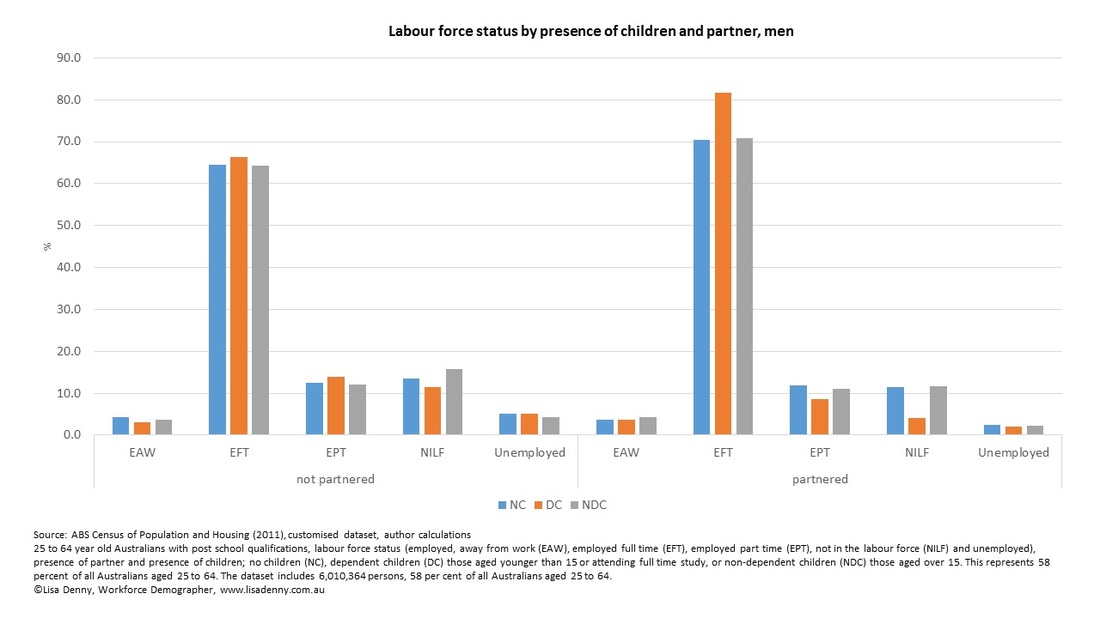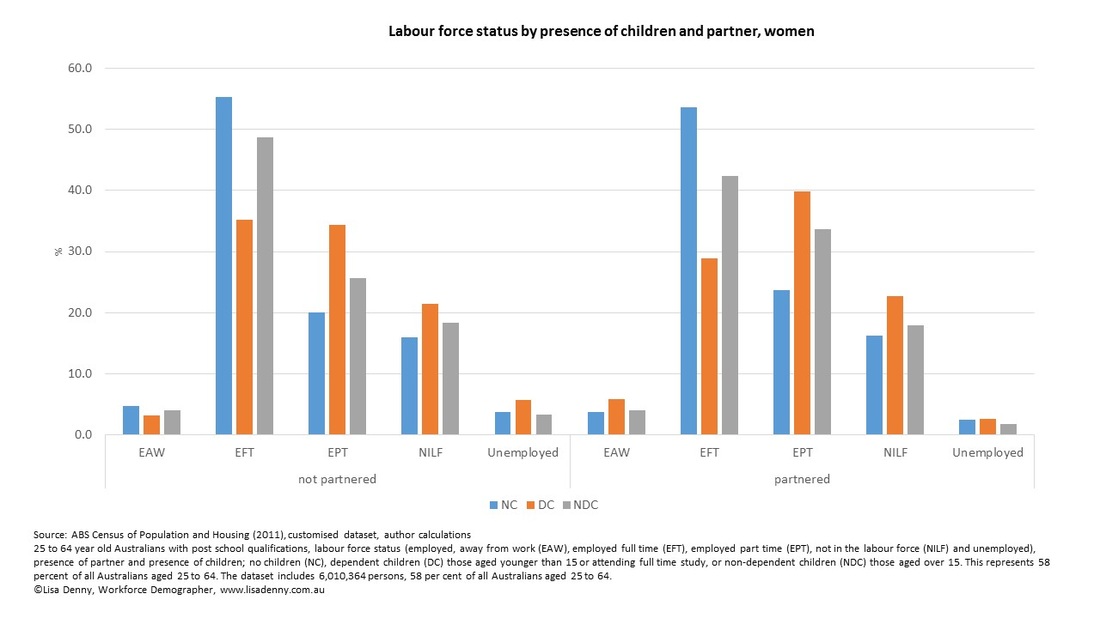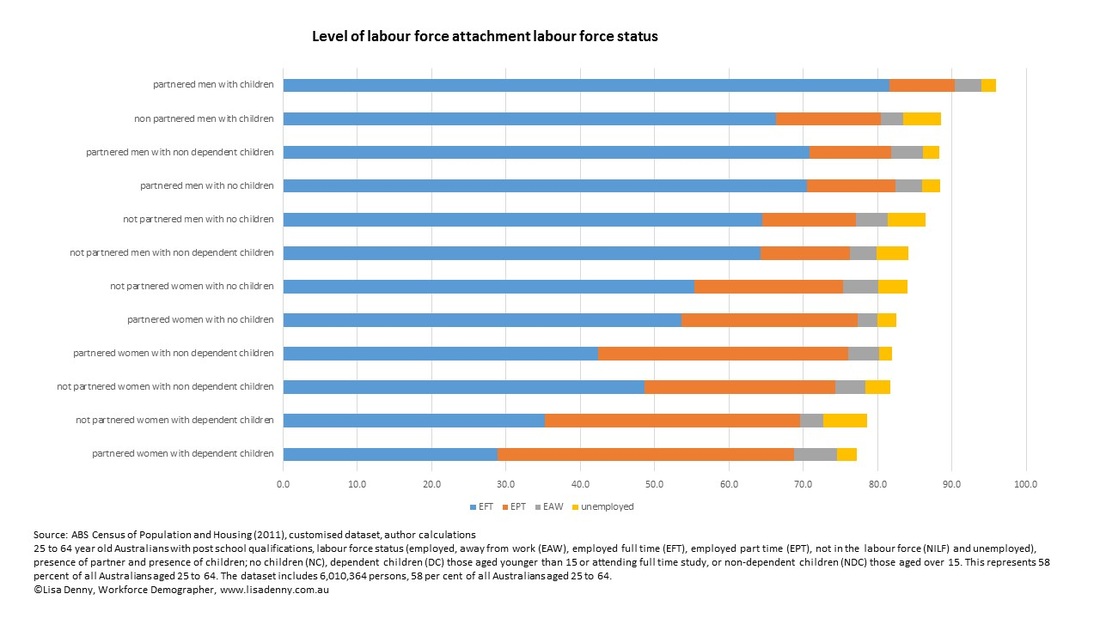The below charts illustrate the labour force status for men and women for approximately 6 million 25 to 64 year old Australians with post school qualifications (vocational or tertiary qualification) by the presence of a partner or presence of children; no children (NC), dependent children (DC) those aged younger than 15 or attending full time study, or non-dependent children (NDC) those aged over 15. This represents 58 percent of all Australians aged 25 to 64.
Clearly evident is that men increase their level of attachment to the labour force with the addition of a partner and further with the addition of a child. The converse is true for women; women reduce their level of attachment to the labour force with the presence of a partner and further reduce it with addition of a child. Furthermore, these patterns are consistent for all five year age groups.



